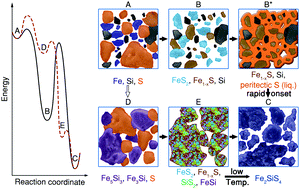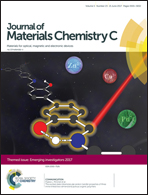In situ identification of kinetic factors that expedite inorganic crystal formation and discovery
Abstract
Navigating the kinetic landscape is a key to reaching complex inorganic phases efficiently. High-temperature treatment of elemental mixtures is the traditional method of solid-state syntheses, where thermodynamic driving forces are large, but success can be hampered by kinetic barriers. Successful inorganic crystal preparation relies on methods to either surmount such barriers, or direct the reaction to avoid them. Both approaches were utilized in our synthetic investigation with in situ X-ray diffraction (XRD) using Fe2SiS4 as the target compound. In this system, Si sulfidation is the limiting factor preventing thermodynamic Fe2SiS4 crystal formation. Through in situ XRD reaction maps, we established that superheated S liquid from the FeS2 peritectic at 743 °C was responsible for the onset of rapid Fe2SiS4 formation. Alternatively, by pre-reacting Si with Fe, we directed the chemical system via intermediate states that expedited Fe2SiS4 formation at temperatures as low as 550 °C. The utilization of these kinetic expediting factors, and those that can be uncovered by similar methods, can improve the potential of the solid state method for creating new materials and refining chemical syntheses.

- This article is part of the themed collection: Journal of Materials Chemistry C Emerging Investigators


 Please wait while we load your content...
Please wait while we load your content...